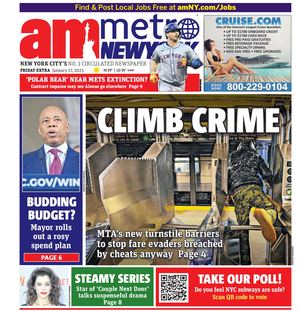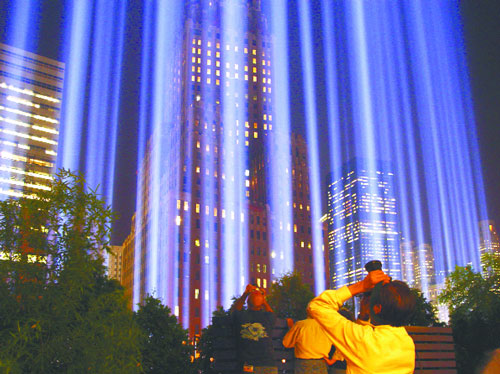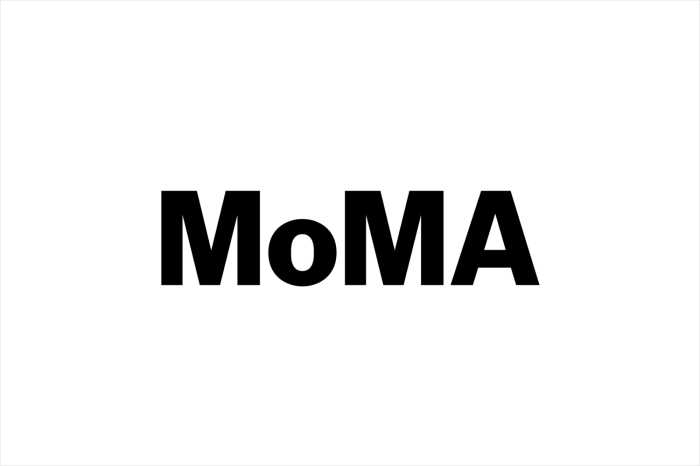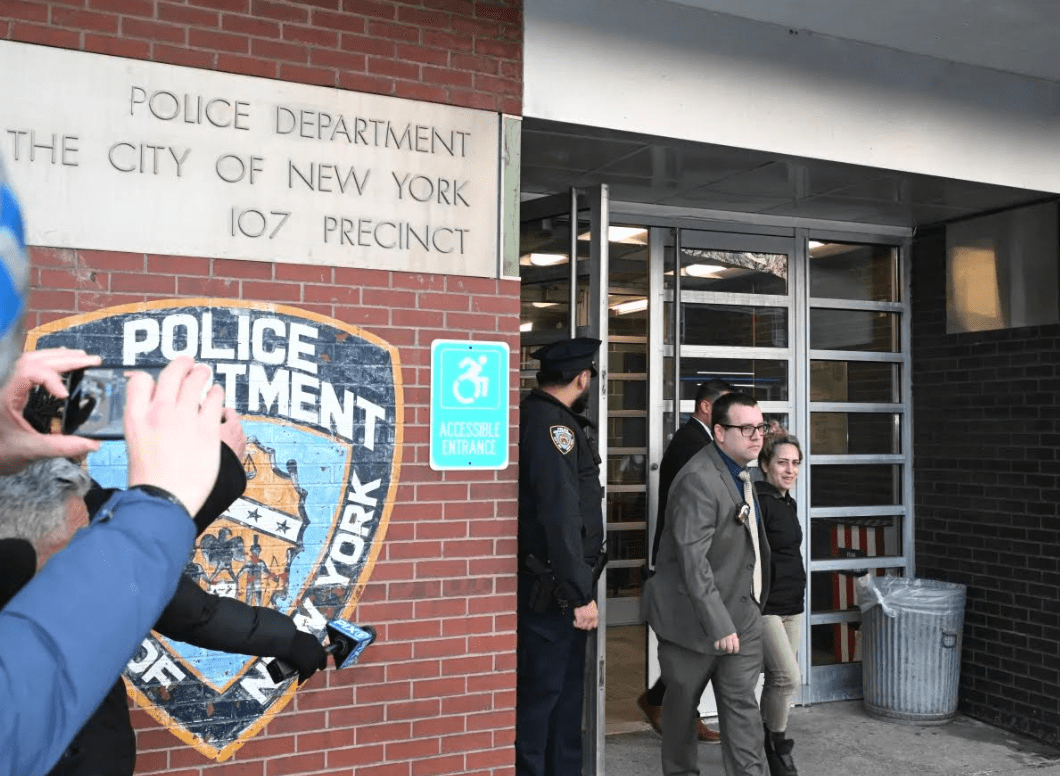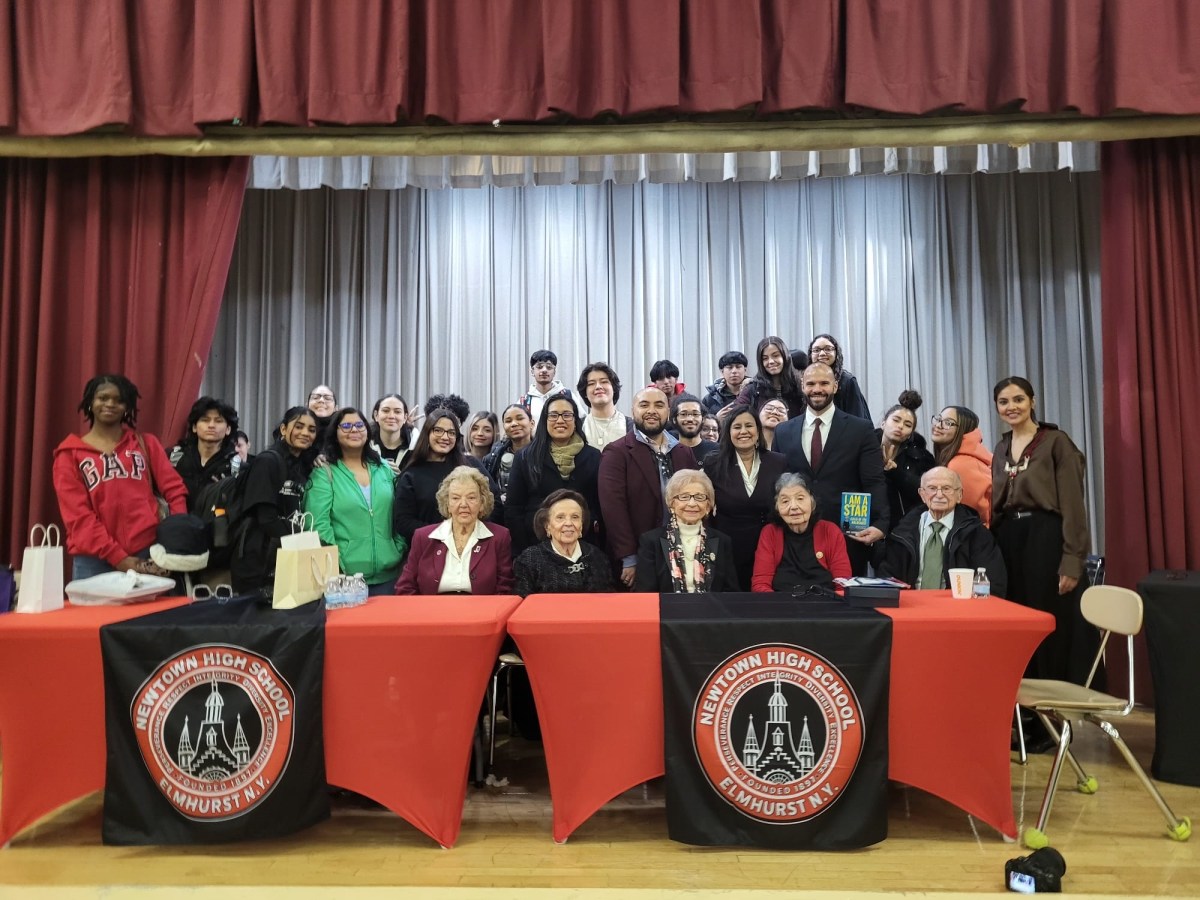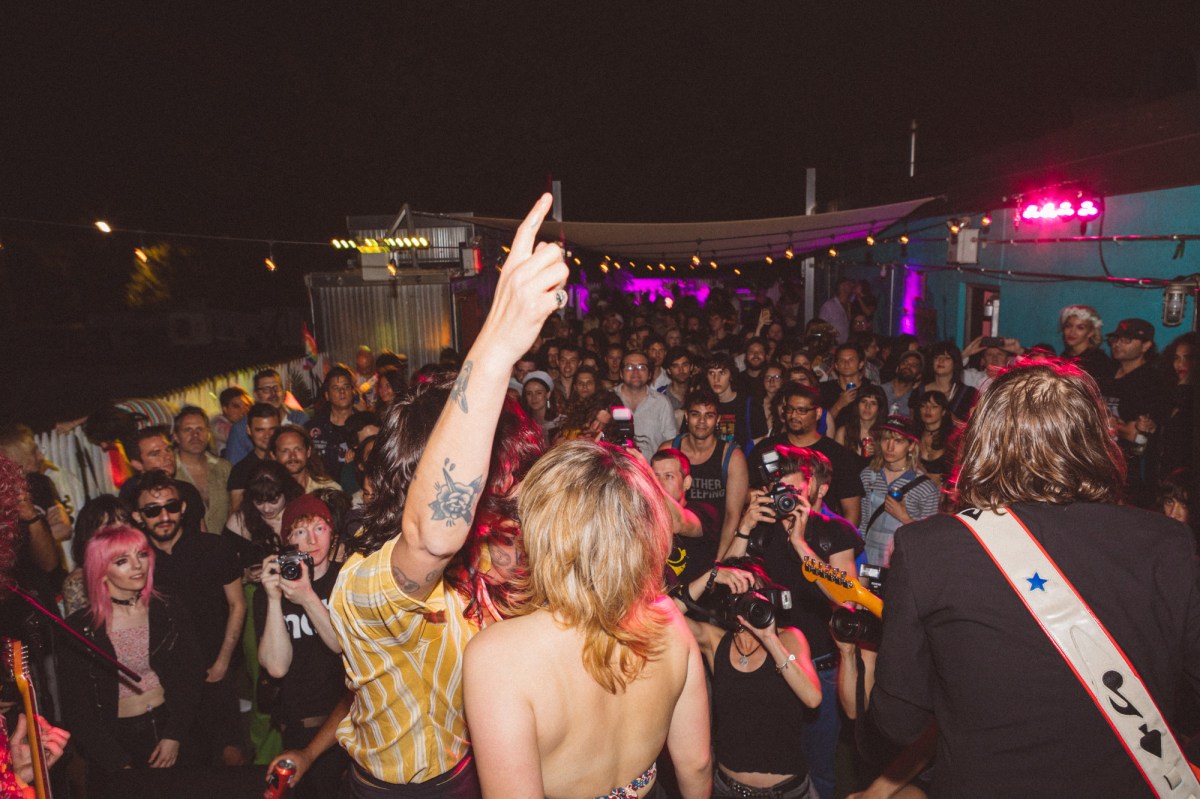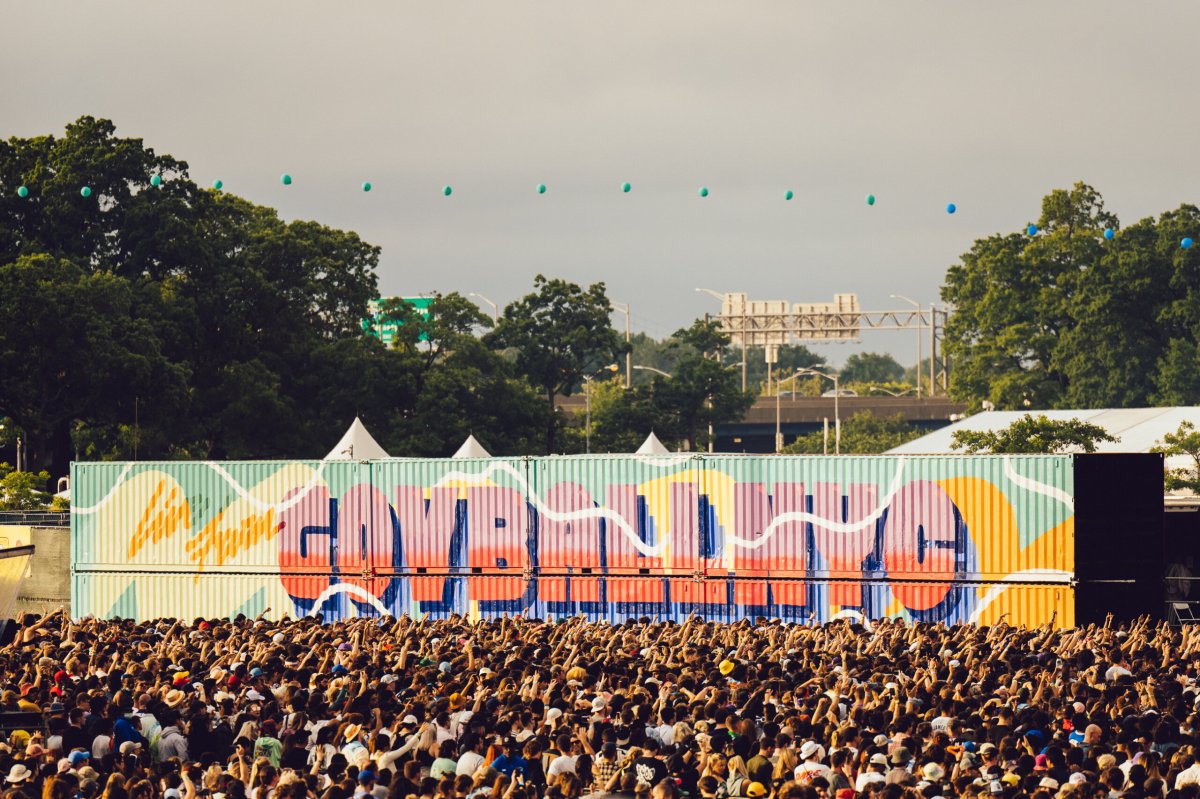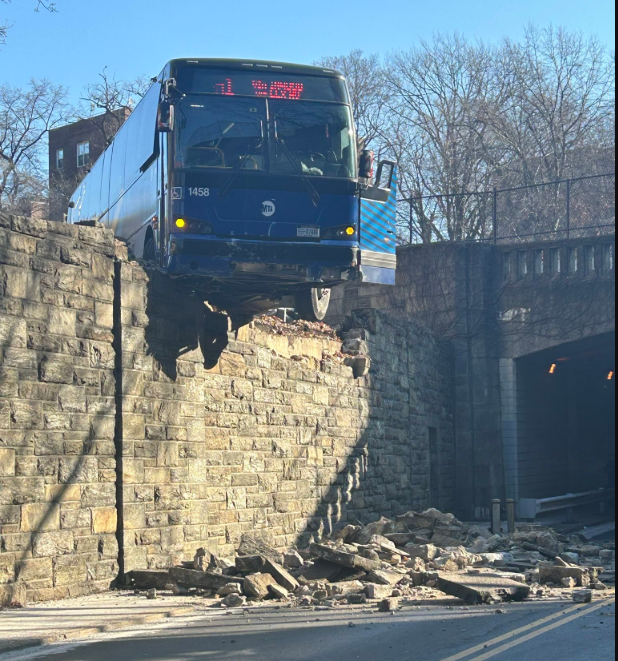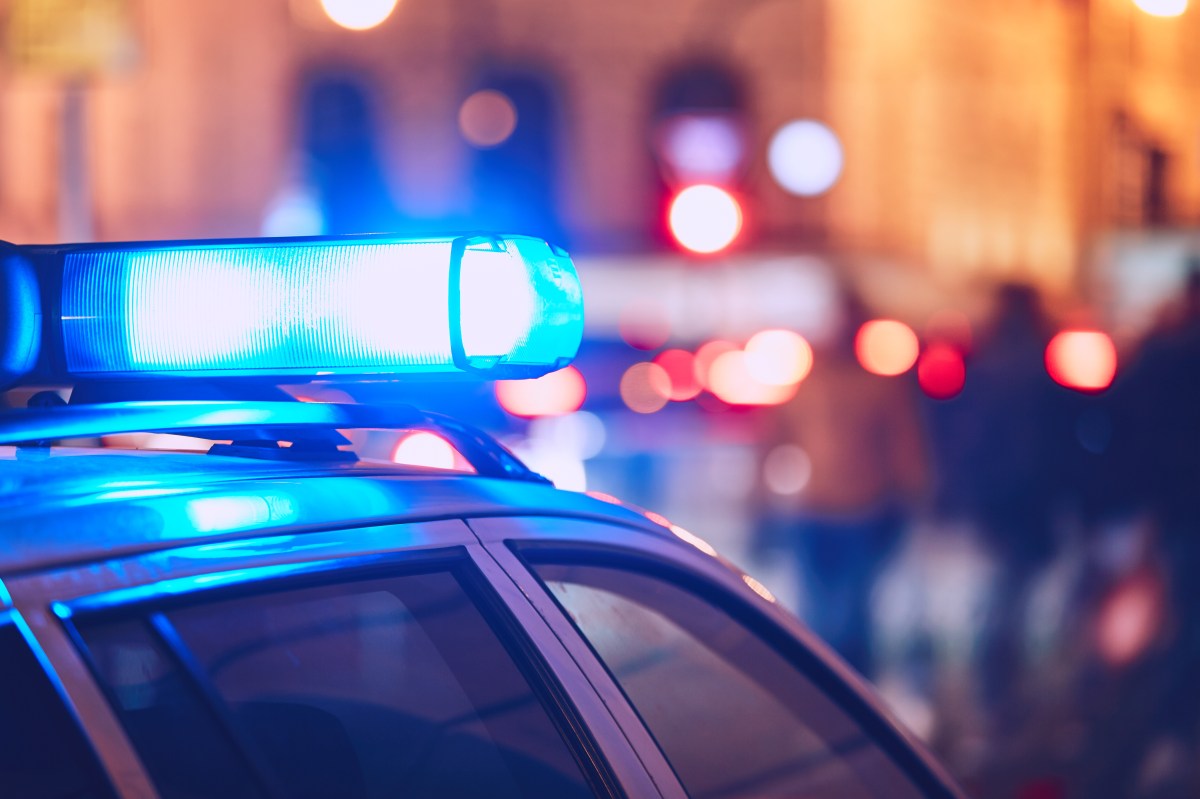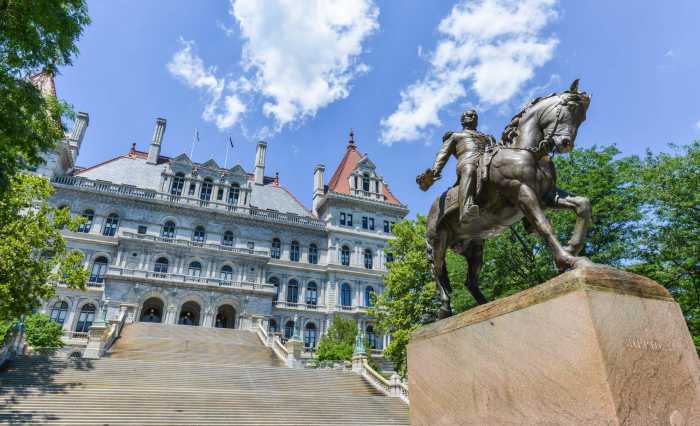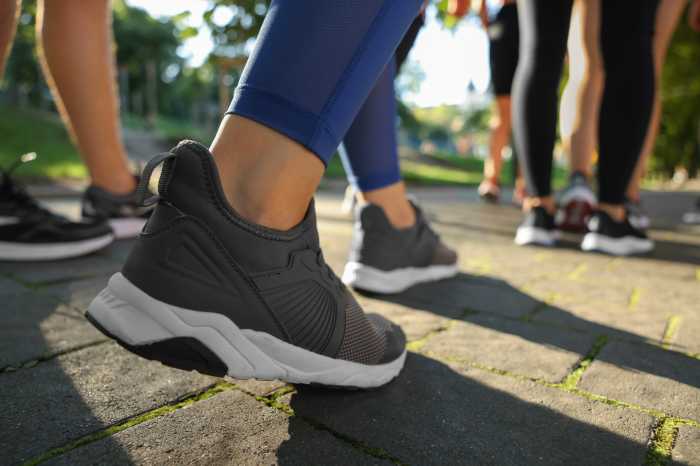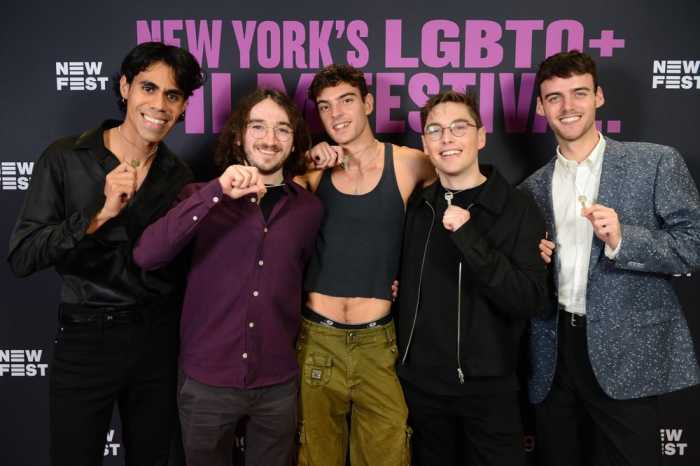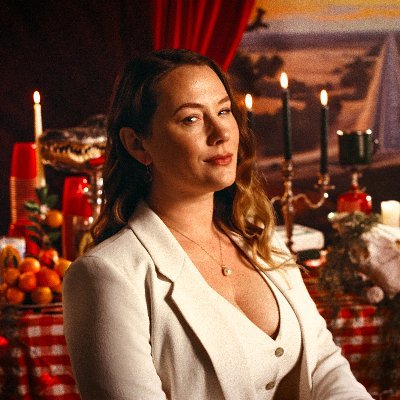“Today, again, we are a city that mourns,” Mayor Mike Bloomberg said on the second anniversary of the Sept. 11, 2001 attacks.
Bloomberg addressed a city that has never stopped grieving for the 3,016 people who lost their lives in three cities on that clear blue morning two years ago.
On the second anniversary of the terror attacks, our remembrance was just more visible: in the people stopped on the sidewalks at 8:46 a.m., in the American flag ties worn on the floor of the stock exchange, in the white ribbons worn by victims’ families at ground zero.
And like grief, people experienced the anniversary individually. Some took the day off of work. Others didn’t change their routines at all. Many took time out for prayer or other private reflection.
For some, the two-year anniversary did come not any easier than the first. Midge Scullin McInnes, 57, of Long Island, lost her brother, Arthur Warren Scullin, 57, an executive vice president at Marsh & McLennan.
McInnes said that on Sept. 11, 2003, “The numbness is wearing off and reality is setting in.”
Elizabeth O’Brien
The ceremony
They came in pairs. Brother and sister, cousins, others related only by grief, the children of 9/11 alternated reading the names of the lost. They pronounced the names slowly and carefully, from Gordon M. Aamoth, Jr. to Igor Zukelman, many having rehearsed with audiotapes they got in the mail.
Each grouping of names ended with a personal tribute. One girl remembered her “ultimate father,” telling him, “You’ll always be in my heart.”
Many family members said they found the children’s recitations powerful, almost unbearably so.
“It’s overwhelming,” said Joanne Mooney, 36, of Kinnelon, N.J. Mooney’s niece and nephew read the name of their father and Mooney’s brother-in-law, Seth Morris.
“So many were named Michael,” said Millie Schifano, 44, of Bayonne, N.J., who lost her brother Michael Trinidad, 33, a Cantor Fitzgerald employee.
Like many family members, Schifano wore a tee shirt with her loved one’s picture on it. Others clutched framed pictures or wore laminated photos around their necks. The images were of happier times—weddings, birthdays, graduations.
There was much sadness at ground zero. But as Bloomberg said, “…we also remember with pride, and from that comes our resolve to go forward.”
Governors George Pataki of New York and Jim McGreevey of New Jersey joined Bloomberg at the morning ceremony. Vice President Dick Cheney was scheduled to appear, but Bloomberg announced the day before that he had asked Cheney to come to a smaller ceremony in the afternoon instead, since the vice president’s large security detail would have inconvenienced family members.
EOB
Mourning for a son
Wanting to get off their feet, Mildred and R.J. Harris of Monroe Township, N.J., had grabbed a seat amid the reporters on the general press riser at ground zero last Thursday.
Each wore a silver memorial bracelet for their son, engraved with “Stewart D. Harris, 9-11-01, Rest in Peace” and a small American flag. Stewart Harris was a vice president and chief credit analyst at Cantor Fitzgerald, on the trade center’s 101st floor. Like other family members interviewed, the Harrises don’t want the “footprints” of the two towers built on, feeling the area is sacred. Their son’s remains were never recovered and they want the W.T.C. debris in the Staten Island landfill returned to ground zero.
“This is his burial ground,” said Mildred. “I know some of the residents won’t be happy about it…. Do the victims’ remains belong in a garbage dump? That’s where they are.”
“There’s no closure,” R.J. said. “This is becoming a political football. And I wish they’d stop it.”
At 8:46 a.m., a silver bell was rung to mark the first plane’s crashing into the north tower, the tower their son had worked in. Mildred burst into sobs.
When, some time later, one of the children reading the 2,792 names of those who died in the towers and on the two New York planes, uttered her son’s name, Mildred again was wracked by emotion.
“Let’s go,” her husband said, and with Mildred clutching flowers they’d been handed, they descended down the long ramp to the pit.
Lincoln Anderson
‘He’s in our hearts’
Hyungshin and Yongjin Song, both wearing dark sunglasses and hats, were also sitting on the press riser. It would be a while until their son’s name, Daniel W. Song, was read. A Cantor Fitzgerald bond trader and Greenwich St. resident, he had been on the north tower’s 105th floor on that fateful day.
“Still, he is in our heart,” his mother, Hyungshin, said. “Wherever we go, whatever we do — if we see something exciting or beautiful, we think of him.”
Asked about the rebuilding plans, his father, Yongjin, said, “Hopefully, the main focus is the memorial site.”
LA
On the afternoon of Sept. 11, 2001, thousands of shaken New Yorkers lined West St. to cheer on emergency vehicles in the hopes they would bring back survivors from the burning W.T.C. rubble. As the rescue mission turned into a recovery and cleanup operation, a core group of people settled on Christopher St. to cheer the vehicles on day and night over the next nine months.
Many came back to the spot later dubbed “Point Thank You” last week. “We came every night to thank the rescue workers,” said Bridget Casmey of Queens. “We were doing little enough, but it meant a lot.”
Casmey, who was born in Ireland, said she was filled with “rage and anger” after the attack but “looking at the heroism of the firemen — that’s what did it for us.” She and her husband, both senior citizens, would often come late to cheer because she figured there would be fewer people to support the late-night workers.
Erin Rooney, a Village resident, said she was overcome with emotion after the attack and was disturbed that her classmates in her M.B.A. program were carrying on as if nothing happened.
“I couldn’t cope with it, I was crying every night,” she said last week. “I came down here just to cope, just to be with people. These people give me comfort. These are the most amazing set of people around.”
She and Casmey said they plan to return next Sept. 11.
The group sometimes called themselves the “Nuts on the Highway,” but motorists had a different view. Many honked their horns in support and some of those who worked at the site slowed down on the busy roadway long enough to look supporters in the eyes and say “thank you.”
Josh Rogers
The workers
Some survivors of the World Trade Center attack wanted nothing to do with ground zero on Sept. 11, 2003. Others, like Peter Bitwinski, gravitated toward the site on the second anniversary.
“It gives me more comfort to be here than not to be here,” said Bitwinski, 50, a Port Authority worker who said he still struggles with survivor’s guilt. He took the day off work to watch the ground zero ceremony and then spend time in quiet reflection at the North Cove marina in Battery Park City.
Several workers said fewer people came to the office that day. Some might have stayed away because of logistical hassles—workers had to show an employee ID to get past street closures—some because of the memories.
For those who did come to work, companies held observances. Ed Wansley, 41, said that his law firm held a company breakfast, where workers could watch the ground zero ceremony on television.
“It is a pretty subdued day at work,” said Wansley, whose firm used to be located in Tower 2.
Philip Farrelly, 53, a construction supervisor who has worked since the attacks repairing the physical damage wrought by the terrorists, took a moment at lunch to think about the two years he has been on the job.
His team replaced a total of 6,000 windows in the World Financial Center offices, the Winter Garden, and One Liberty Plaza.
About the recovery, he said, “There’s still a lot more work to do, but it’s getting there.”
EOB
After the service concluded, former Mayor Rudy Giuliani and his wife, Judi Nathan, mingled among the family members. Giuliani posed for photos, gave handshakes, hugs, kisses and words of comfort. He then made his way slowly down the left side of the massive ramp down into the pit, stopping frequently to greet those coming back up the other side.
Giuliani, who favors expanding the size of the proposed memorial area, was warmly received by the family members.
At the top of the ramp, Giuliani was making his way out after visiting the pit. He stopped and joined in with firefighters as they joked to ease the mood.
LA
The residents
For many Lower Manhattan residents, the second anniversary of 9/11 brought simply another day to acknowledge their changed reality. The construction in the area, the police boats, and other reminders have forced Downtowners to confront the aftermath of the attacks on a daily basis.
Many residents have said that they don’t want the site to feel like a cemetery, but last week their focus was more on the meaning of the day. Some chose to spend the day like any other.
“Really, what is there to do?” asked Jim Donahue, 66, who lives in the south end of Battery Park City. “When you’re here, there’s always a presence. You see what’s happened to our city, our neighborhood.”
Eloise Heppard, a resident of Independence Plaza North, was marking the second anniversary of the terror attacks with a doctor’s appointment.
“I’ve had a lot of upper respiratory problems since 9/11,” said Heppard, 64.
Heppard also commemorated the day with a prayer for those who lost loved ones, but she avoided watching coverage of the second anniversary on television: “too depressing.”
EOB
The pit
The 16-acre pit that is ground zero is no longer a barren dustbowl like a year ago.
The new PATH station covers the eastern part of the site, while construction trailers and machinery cover the rest. The temporary PATH station is slated to be open in November and many family members agreed to let the tracks continue to cross over the footprints.
Symbolizing the Twin Towers at the ceremony were two shallow, footprint-shaped reflecting pools on which the family members piled flowers.
Bracing the slurry wall, or “bathtub,” that rings the trade center site were massive, rusty brown bolts, projecting at angles from the wall.
The pit’s floor was covered by small rocks like one might find on a railroad track bed. Many had used the Deer Park water bottles that were handed out as holders for flowers, piling rocks around the bottom of the bottles, to create small memorials on the bedrock floor. One woman was scooping some of the grayish dirt into one of the bottles to take with her. “I Love You Daddy” said a yellow sign left on the ground. At another spot, a Hispanic family was kneeling and weeping over a spot they had ringed with American flags, forming the outline of a grave.
Vanessa Kostyra, 21, was standing on the edge of the reflecting pool representing the north tower. On the lapel of her blue uniform was a silver Lynnbrook Fire Department badge.
She seemed like she wanted to talk. Asked how she was feeling, she said, “there’s no words,” her voice full of emotion. As if she had been holding it back, a tear immediately streamed down her left cheek.
Her aunt had been an accountant for Marsh & McLennan on the trade center’s 90th floor. Kostyra always wanted to be a firefighter and E.M.T., but, “After 9/11, it increased — it sped up,” she said. Wet eyed, she placed her flowers on the memorial.
LA
Mayor christens boat
A bit later, at the police memorial in North Cove marina in Battery Park City, Mayor Bloomberg and Police Commissioner Ray Kelly presided over the dedication of a new Harbor Unit launch. The boat was dubbed 23 Heroes, after the 23 police officers who died responding to the trade center attack, in what the mayor in his remarks called “the greatest rescue ever mounted on the face of the Earth.”
On the second whack, Bloomberg christened the boat’s hull with a bottle of champagne, as widows and relatives tossed single flowers towards the boat.
LA
Radical 9/11 claim
While children of the people killed on Sept. 11 read the names of the victims, a large sign reading “The Bush Regime Engineered 9/11” was posted three blocks to the north on West St. There were only a few people standing in support of the sign and the crowd surrounding it was there to express their outrage or to observe a man screaming obscenities and accusing Bush and his aides of being Nazis.
The man did not offer evidence for his Nazi or 9/11 claims, but yelled that a careful search of the Internet would prove his points. Members of the crowd responded with everything from quiet reasoning to yelling. The anti-Bush protestor cursed at one man who said he felt the protestor had a right to express his views regardless of what they were.
Police made sure the Murray St. sidewalk remained clear and encouraged the protestor not to curse.
When a motorist, yelled “you’re a communist” to another demonstrator, this protestor responded, “So what. You’re a terrorist.
JR
‘Tribute in Light’
As I cycled down the Hudson River bike path to the “Tribute in Light” installation in the evening, I couldn’t help but think that the Twin Towers would have been to my left if they were still standing and the majestic beams of light representing the towers were to my right. At least I think so. Like many, I can’t remember where you were able to see the towers and where you weren’t. I know one person who could see the lights from her apartment, but couldn’t see the towers.
The work, first seen on the six-month anniversary of the attack, was designed by architects John Bennett and Gustavo Bonevardi of PROUN Space Studio, artists Julian LaVerdiere and Paul Myoda, architect Richard Gould, and lighting designer Paul Marantz and organized by the Municipal Art Society of New York and Creative Time.
There was talk of putting the lights closer to the tower footprints on the W.T.C. site, but apparently logistical considerations sent them back to the west in Battery Park City.
Nevertheless, the lights drew hundreds of people to its source – most of whom snapped pictures of the “Tribute” — and no doubt thousands, if not millions, watched the lights from all over the city or New Jersey. From up close, it was striking how the two tower beams would meet way up in the sky, or as many have described it, the heavens.
I thought about the W.T.C. memorial to the 3,022 killed in 2001 and 1993 and wondered if the design, expected to be selected this fall, would allow for the lights to return to the exact spot where the towers once stood.
JR
Union Sq. ceremonies
In Union Sq., members of the No Police State Coalition were inveighing against the Patriot Act and the Bush administration.
“The Democrats believe in this system, this racist, imperialist system…. Bloomberg is just a puppet in all this,” said a young, scraggly-bearded man into a bullhorn, standing on a milk crate, as the crowd cheered their agreement.
The same “Bush Engineered” sign seen on West St. earlier in the day made it up to the park.
Some people gathered around a small 9/11 memorial near the George Washington equestrian statue.
Tending the candles and arranging the memorial placards, John Bracken, 23, of Queens, said he lost a good friend from Fordham on 9/11.
“I came here right after the attacks,” he said, moving around on his haunches, relighting wicks. “I came here last year. This was like the epicenter after the attacks, because, of course, after the attacks you couldn’t get to ground zero…. This year, it seems more political discussion-oriented,” he said. “But I think remembrance should still be the focus.”
He and his friend had been shuttle van drivers at Fordham.
“She was a really gorgeous girl,” he said.
Bracken had been up since the day before. He’d gone down to ground zero at 2 a.m. that morning, where he was overcome by emotion, but a fireman had put a comforting hand on his shoulder. Then he wrote a poem about ghosts of 9/11 wandering the streets of New York. Bracken was then one of three dozen people who attended a 6 a.m. ecumenical service in Battery Park City, led by Manhattan Borough President C. Virginia Fields and Councilmember Alan Gerson.
John Levin of 16th St. was explaining to his two children the “Tribute in Light,” now beaming up into the darkened sky over the former Bradlee’s department store building on Union Sq. S.
“They were the tallest buildings in New York,” he said.
“They were really tall — higher than that building. They might go up to the sky,” said Ellie, 6.
“Why did the people die?” she asked.
“Fire burned on them, and all the people died on fire,” said her brother, Abey, 3, swishing his hands above his head as if to show flames.
“We lost a good friend in the trade center,” Levin, a securities analyst, said. “I was taking the kids out for a walk in the park. I totally forgot there was a memorial here.”
Emily Greenberg and Sabina Feldmann, both 32-year-old Villagers, were admiring a twin towers with colored tiles for windows made by a Brooklyn preschool that had been added to the memorial. They also liked the Tribute of Light.
“We absolutely love the lights. We think it should be every night. Or do it the 11th of every month,” Greenberg said of the white beams shooting up from ground zero.
LA
Firehouse visit
Mayor Bloomberg was on Lafayette St. in Soho in the afternoon, where he joined Fire Department Commissioner Nicholas Scoppetta in meeting with members of the Ladder 20 firehouse.
“We haven’t forgotten. We won’t forget,” the mayor said, before going in for a private talk with the ladder company, which lost seven members on 9/11.
Firefighter Rich Stewart, a 17-year veteran of the firehouse, said the mayor talked about “Kids and stuff… Try do something for us about a raise… He said he’s trying to do what he can to come up with the money. He was a pleasant man.”
On his wrist was a silver 9/11 memorial bracelet.
“That’s for all the guys in my house,” he said. “I miss all the guys a lot.”
LA
Downtown Express photo by Lorenzo Ciniglio
Reader Services
